Xylazine Hydrochloride
Synonym(s):2-(2,6-Dimethylphenylamino)-5,6-dihydro-4H-thiazine hydrochloride;5,6-Dihydro-2-(2,6-xylidino)-4H-1,3-thiazine hydrochloride;Xylazine hydrochloride
- CAS NO.:23076-35-9
- Empirical Formula: C12H17ClN2S
- Molecular Weight: 256.79
- MDL number: MFCD00058196
- EINECS: 245-417-0
- SAFETY DATA SHEET (SDS)
- Update Date: 2024-07-02 08:55:06
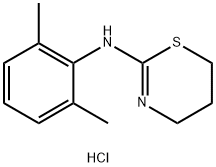
What is Xylazine Hydrochloride?
Chemical properties
Off-White Solid
The Uses of Xylazine Hydrochloride
Xylazine hydrochloride is α2 class of adrenergic receptor agonist. As with other α2 agonists, adverse effects include bradycardia, conduction disturbances, and myocardial depression. It is a clonidine analoque. It acts on presynaptic and postsynaptic receptors of the central and peripheral nervous systems. It is used as a sedative, analgesic, muscle relaxant. It is also used to anesthetize rats/mice.
What are the applications of Application
Xylazine Hydrochloride is an adrenergic alpha-2 agonist
Definition
ChEBI: Xylazine hydrochloride is the hydrochloride salt of xylazine. It is used as a sedative, analgesic, and muscle relaxant in veterinary medicine. It has a role as an alpha-adrenergic agonist, an analgesic, an emetic, a muscle relaxant and a sedative. It contains a xylazine(1+).
brand name
Rompun (Bayer Animal Health).
Biological Activity
Xylazine Hydrochloride is a strong agonist of α2-adrenoceptor [1].xylazine hcl has been reported to stimulate the proliferation of rat thymocytes in vivo (at doses of 2.5 mg/kg and 5 mg/kg) and in vitro (at concentration of 5 mm) [2]. in the analgesic testing, xylazine has shown a significant prolongation of the analgesic effects in the presence of naloxine in 40 and 50 mins. in addition, xylazine has also shown the inhibitory effect in the mouse vas deferens bioassay with the ic50 value of 18nm. furthermore, xylazine has displayed a potent specific [3h]-dihydromorphine binding inhibition with the ic50 value of 8μm in opiate receptor binding test [1].
Biochem/physiol Actions
Xylazine is used as a sedative in goats as it is safe, active and a cheap drug. It is a centrally acting drug, which exhibits muscle relaxant and analgesic properties.
Side Effects
Respiratory depression, low blood pressure, slowed heart rate, hypothermia, pupil constriction and, sometimes, high blood sugar levels.
The pupil constriction and respiratory depression are particularly of concern, as these are very common and widely understood effects of an opioid overdose.
Severe, necrotic skin ulcerations are the most striking side effect of xylazine. Notably, while these skin ulcerations may appear at the site of injection, they may appear at a completely different site on the body altogether. Soft tissue infections are often associated with IV drug use of more conventional illicit substances such as opioids, but these are almost always located at the injection site.
Veterinary Drugs and Treatments
Xylazine Hydrochloride is approved for use in dogs, cats, horses, deer, and elk. It is indicated in dogs, cats, and horses to produce a state of sedation with a shorter period of analgesia, and as a preanesthetic before local or general anesthesia. Because of the emetic action of xylazine in cats, it is occasionally used to induce vomiting after ingesting toxins.
References
[1] s. browning, d.lawrence1, a.livingston & b.morris. interaction of drugs active at opiate receptors and drugs active at α2-adrenoceptors on various test systems
[2] colić m1, cupić v, pavicić l, vucević d, varagić vm. xylazine, an alpha 2-adrenergic agonist, modulates proliferation of rat thymocytes in vivo and in vitro. methods find exp clin pharmacol. 2000 sep;22(7):557-62.
Properties of Xylazine Hydrochloride
| Melting point: | 150-164?C (dec.) |
| storage temp. | 2-8°C |
| solubility | ≥12.84 mg/mL in DMSO; ≥24.1 mg/mL in EtOH; ≥24.15 mg/mL in H2O |
| form | neat |
| form | Solid |
| color | White to Almost white |
| Water Solubility | Soluble in water |
| Merck | 14,10080 |
| BRN | 6448471 |
| InChI | InChI=1S/C12H16N2S.ClH/c1-9-5-3-6-10(2)11(9)14-12-13-7-4-8-15-12;/h3,5-6H,4,7-8H2,1-2H3,(H,13,14);1H |
| CAS DataBase Reference | 23076-35-9(CAS DataBase Reference) |
Safety information for Xylazine Hydrochloride
| Signal word | Danger |
| Pictogram(s) |
 Skull and Crossbones Acute Toxicity GHS06 |
| GHS Hazard Statements |
H301:Acute toxicity,oral H315:Skin corrosion/irritation H319:Serious eye damage/eye irritation H335:Specific target organ toxicity, single exposure;Respiratory tract irritation |
| Precautionary Statement Codes |
P261:Avoid breathing dust/fume/gas/mist/vapours/spray. P264:Wash hands thoroughly after handling. P264:Wash skin thouroughly after handling. P270:Do not eat, drink or smoke when using this product. P301+P310:IF SWALLOWED: Immediately call a POISON CENTER or doctor/physician. P302+P352:IF ON SKIN: wash with plenty of soap and water. P305+P351+P338:IF IN EYES: Rinse cautiously with water for several minutes. Remove contact lenses, if present and easy to do. Continuerinsing. |
Computed Descriptors for Xylazine Hydrochloride
| InChIKey | QYEFBJRXKKSABU-UHFFFAOYSA-N |
| SMILES | N(C1SCCCN=1)C1C(=CC=CC=1C)C.Cl |
Xylazine Hydrochloride manufacturer
Manasvi Life Sciences
Alivira Animal Health Ltd
Noven Lifesciences Pvt Limited
New Products
(S)-3-Aminobutanenitrile hydrochloride 4-Methylphenylacetic acid N-Boc-D-alaninol N-BOC-D/L-ALANINOL Tert-butyl bis(2-chloroethyl)carbamate 3-Morpholino-1-(4-nitrophenyl)-5,6-dihydropyridin- 2(1H)-one Furan-2,5-Dicarboxylic Acid Tropic acid S-2-CHLORO PROPIONIC ACID ETHYL ISOCYANOACETATE 2-Bromo-1,3-Bis(Dimethylamino)Trimethinium Hexafluorophosphate 4-IODO BENZOIC ACID 3-NITRO-2-METHYL ANILINE 1-(2,4-DICHLOROPHENYL) ETHANAMINE (2-Hydroxyphenyl)acetonitrile 4-Bromopyrazole 5,6-Dimethoxyindanone 2-(Cyanocyclohexyl)acetic acid 4-methoxy-3,5-dinitropyridine 1-(4-(aminomethyl)benzyl)urea hydrochloride 2-aminopropyl benzoate hydrochloride diethyl 2-(2-((tertbutoxycarbonyl)amino) ethyl)malonate tert-butyl 4- (ureidomethyl)benzylcarbamate Ethyl-2-chloro((4-methoxyphenyl)hydrazono)acetateRelated products of tetrahydrofuran
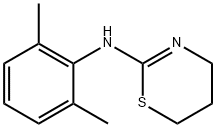
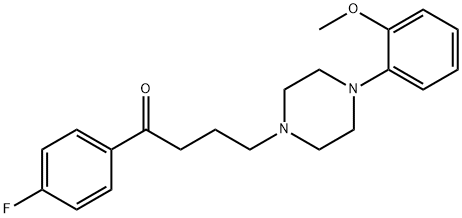
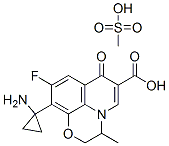
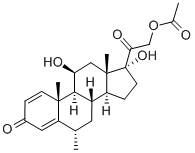
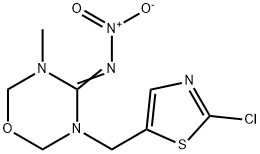

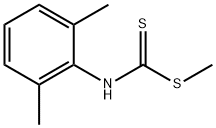
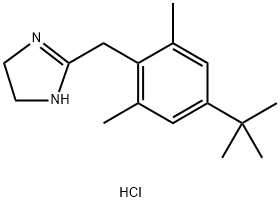
You may like
-
 23076-35-9 Xylazine Hydrochloride USPView Details
23076-35-9 Xylazine Hydrochloride USPView Details
23076-35-9 -
 23076-35-9 99%View Details
23076-35-9 99%View Details
23076-35-9 -
 Xylazine hydrochloride 98% (HPLC) CAS 23076-35-9View Details
Xylazine hydrochloride 98% (HPLC) CAS 23076-35-9View Details
23076-35-9 -
 Xylazine hydrochloride 23076-35-9 99%View Details
Xylazine hydrochloride 23076-35-9 99%View Details
23076-35-9 -
 Xylazine hydrochloride 98%View Details
Xylazine hydrochloride 98%View Details
23076-35-9 -
 23076-35-9 Xylazine hydrochloride 98%View Details
23076-35-9 Xylazine hydrochloride 98%View Details
23076-35-9 -
 Xylazine Hydrochloride CAS 23076-35-9View Details
Xylazine Hydrochloride CAS 23076-35-9View Details
23076-35-9 -
 Xylazine hydrochloride CAS 23076-35-9View Details
Xylazine hydrochloride CAS 23076-35-9View Details
23076-35-9